A Scientific Approach to Skin Rejuvenation
As the pursuit of youthful, radiant skin intensifies, a range of scientifically supported skin rejuvenation techniques has emerged. This article delves into the evidence-based procedures and mechanisms behind effective skin rejuvenation, evaluates current research trends and clinical validations, and outlines safety considerations alongside emerging regenerative therapies. Our goal is to provide a comprehensive overview grounded in scientific rigor to guide readers seeking clinically validated anti-aging solutions.
Scientifically Supported Skin Rejuvenation Techniques and Their Efficacy
Several skin rejuvenation methods have strong scientific backing, both through clinical research and expert consensus. These include invasive procedures such as laser resurfacing, chemical peels, dermal fillers, and minimally invasive technologies like radiofrequency (RF) microneedling, all of which aim to improve skin appearance by stimulating collagen and elastin production.
Clinical studies, particularly randomized controlled trials categorized at level II evidence, demonstrate that these therapies effectively address common signs of skin aging. For example, laser treatments like fractional CO2 and Erbium lasers can significantly reduce wrinkles and age spots by removing damaged skin layers and promoting collagen synthesis. Chemical peels utilizing acids such as glycolic, lactic, or TCA are shown to enhance skin texture and tone, while non-ablative lasers like Fraxel stimulate collagen with shorter recovery time.
In addition, injectables including Botox (botulinum toxin) and hyaluronic acid-based fillers are extensively validated for their ability to temporarily smooth dynamic wrinkles and restore facial volume. The combined use of these agents is supported by numerous studies, illustrating improved facial contours and skin support. Radiofrequency devices and microneedling systems like Vivace RF also show evidence of increasing collagen, tightening skin, and decreasing fine lines.
Topical agents like retinoids (e.g., tretinoin) and cosmeceuticals containing antioxidants (vitamins C, E) are not invasive but are backed by research for their ability to boost cell turnover, reduce oxidative stress, and improve skin elasticity. These are considered safer options, especially suitable for maintenance therapy.
Safety profiles for these procedures are generally favorable, with common side effects such as erythema, swelling, bruising, and transient discomfort. Serious adverse events are rare when treatments are performed by trained professionals. Overall, these scientifically supported modalities provide effective options for skin rejuvenation, with outcomes varying based on individual factors and specific treatment protocols.
This evidence-based approach underscores the importance of consulting qualified dermatologists to tailor treatments that balance efficacy with safety for optimal facial skin rejuvenation.
Evidence-Based Skin Rejuvenation Procedures: Modalities and Applications
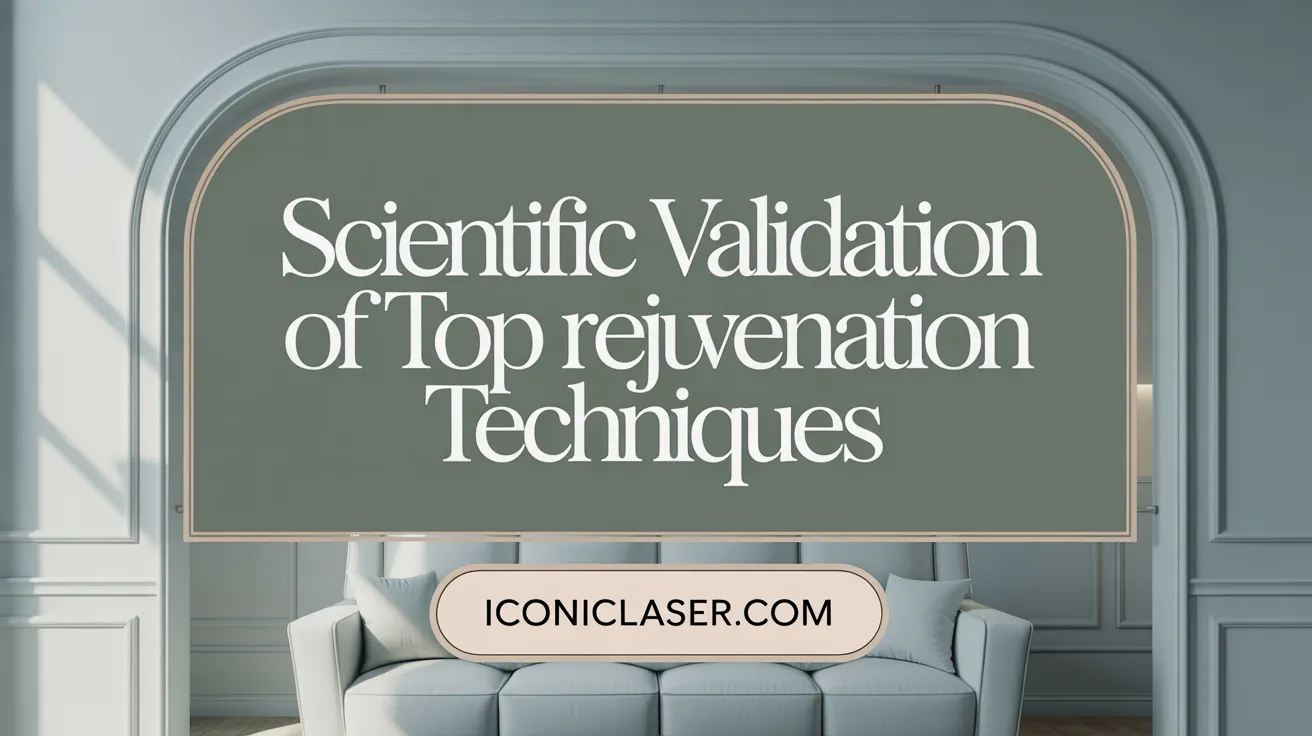 Various evidence-based procedures are widely utilized in skin rejuvenation to address aging signs such as wrinkles, scars, and pigmentation. Laser therapies are among the most common, with fractional and CO2 lasers being highly effective. Fractional lasers create micro-injuries in the skin, stimulating collagen production while allowing faster recovery. CO2 lasers, classified as ablative, remove damaged skin layers for deep skin renewal.
Various evidence-based procedures are widely utilized in skin rejuvenation to address aging signs such as wrinkles, scars, and pigmentation. Laser therapies are among the most common, with fractional and CO2 lasers being highly effective. Fractional lasers create micro-injuries in the skin, stimulating collagen production while allowing faster recovery. CO2 lasers, classified as ablative, remove damaged skin layers for deep skin renewal.
Chemical peels are classified by depth, with superficial peels using alpha-hydroxy acids (like glycolic and lactic acid) to gently exfoliate the outer skin, and medium to deep peels involving stronger acids such as TCA to remove larger skin layers. These promote cell turnover and collagen synthesis, helping to improve skin texture, pigmentation, and fine lines.
Microneedling involves puncturing the skin with fine needles to induce a controlled injury response. When combined with platelet-rich plasma (PRP), it significantly enhances collagen and elastin fiber production, resulting in smoother, firmer skin, brighter complexion, and reduced scars.
Device-based treatments like radiofrequency (RF) and RF microneedling (RFM) also provide effective, non-invasive options. RF technology heats the dermis to stimulate collagen remodeling, tightening the skin.
Emerging therapies focus on combining different modalities such as laser, microneedling, and PRP, aiming for synergistic effects that maximize skin regeneration. These combination approaches cater to various skin concerns, offering customized, minimally invasive options backed by scientific research.
Scientific Mechanisms Underlying Skin Rejuvenation Methods
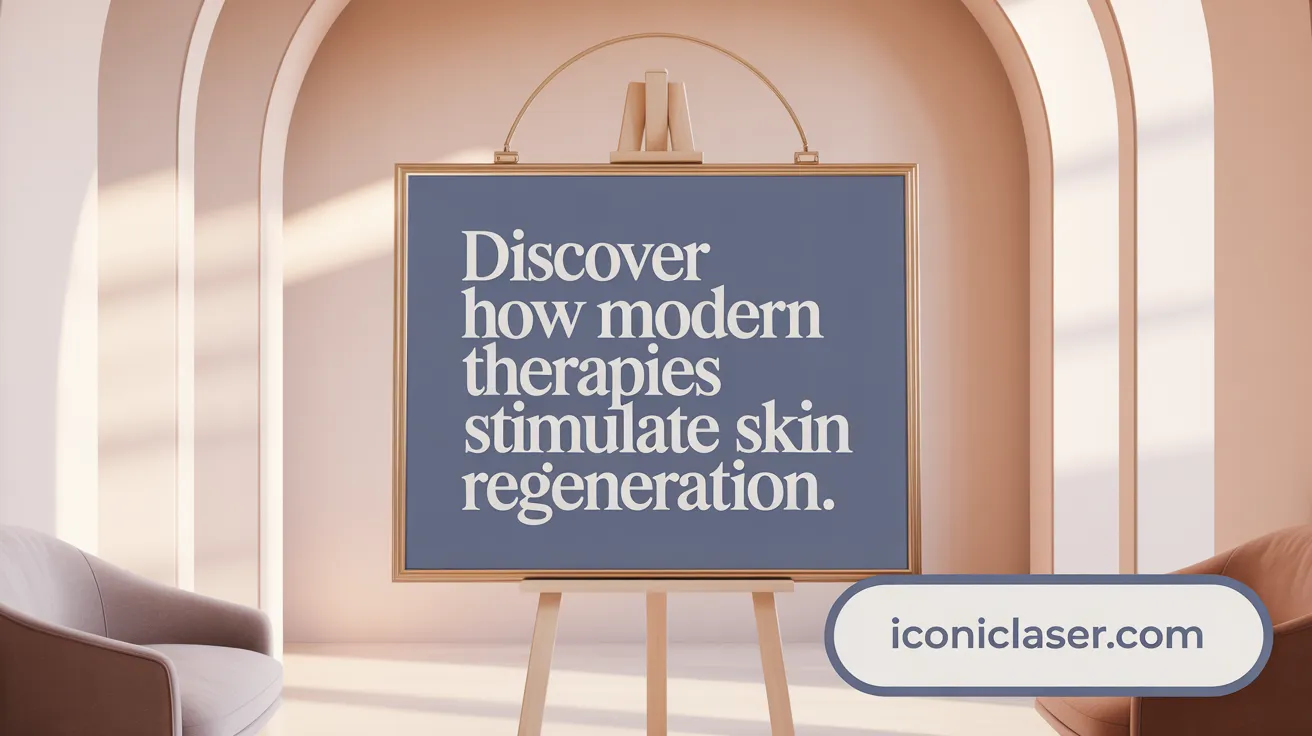
What are the scientific mechanisms behind different skin rejuvenation methods?
Skin aging results from complex biological processes, including decreased production of structural proteins like collagen and elastin, accumulation of cellular damage, and changes in extracellular matrix components. Modern rejuvenation techniques tap into these processes to restore youthful skin.
One primary mechanism involves stimulating fibroblasts—the cells responsible for producing collagen and elastin. Energy-based systems such as fractional lasers, radiofrequency (RF), and ultrasound generate controlled thermal effects that induce micro-injuries or heat a targeted skin layer. This controlled damage prompts the fibroblasts to increase collagen and elastin synthesis, resulting in skin tightening, improved elasticity, and wrinkle reduction. For more on these Advanced skin rejuvenation techniques and their efficacy, see the detailed review.
Chemical peels and topical agents work differently by removing the outer damaged epidermal layers and promoting accelerated cell turnover. This regeneration boosts extracellular matrix production and skin renewal, leading to smoother skin. Explore benefits of Chemical peels for skin rejuvenation and Chemical peels using TCA acid for deeper insight.
Injectable treatments like hyaluronic acid and poly-L-lactic acid serve to restore volume and hydration. Hyaluronic acid physically attracts water, reducing the appearance of fine lines and offering immediate plumping effects, while stimulating collagen production over time. Learn about Dermal fillers with hyaluronic acid and Soft tissue fillers for facial volume.
Emerging molecular therapies aim at addressing the cellular and genetic pathways involved in aging. Approaches like senolytics clear senescent cells—the ones that stop dividing and secrete damaging factors—thus reducing inflammation and tissue deterioration. Other strategies, such as mTOR inhibitors, aim to modulate cellular metabolism and oxidative stress, key contributors to aging. See the latest on Regenerative stem cell therapies and molecular approaches and the new skin cell rejuvenation technique for cutting-edge research.
Overall, these various methods harness biological responses—such as collagen remodeling, fibroblast activation, and tissue regeneration—to rejuvenate skin on a molecular level. This combination of mechanical, chemical, and biological stimuli results in a comprehensive approach to skin restoration.
More Details
| Rejuvenation Method | Biological Action | Primary Effect | Additional Notes |
|---|---|---|---|
| Laser & RF Treatments | Heat-induced fibroblast stimulation | Collagen & elastin production | Deep tissue healing, skin tightening<br>Laser skin resurfacing, Radiofrequency microneedling benefits |
| Chemical Peels | Removal of damaged outer skin layers | Cell turnover, ECM synthesis | Enhances surface renewal<br>Chemical peels for skin rejuvenation, Benefits of dermaplaning and chemical exfoliation |
| Topical Agents (Retinoids, AHAs) | Accelerate skin cell turnover | Smoother, brighter skin | Improve pigmentation and texture<br>Topical niacinamide and retinoids benefits |
| Hyaluronic Acid Fillers | Hydrates and volume restoration | Immediate plumping | Stimulate collagen over time<br>Hyaluronic acid fillers, Soft tissue fillers for facial volume |
| Emerging Molecular Therapies | Target cellular senescence and oxidative pathways | Delays aging at cellular level | Future potential for regenerative medicine<br>Regenerative stem cell and gene therapies, Skin cell rejuvenation via epigenetics |
This detailed understanding of the scientific basis of skin rejuvenation methods illustrates how advancing biomedical research continues to refine these techniques for more effective and lasting results.
Current Advances and Research Trends in Skin Rejuvenation Technologies
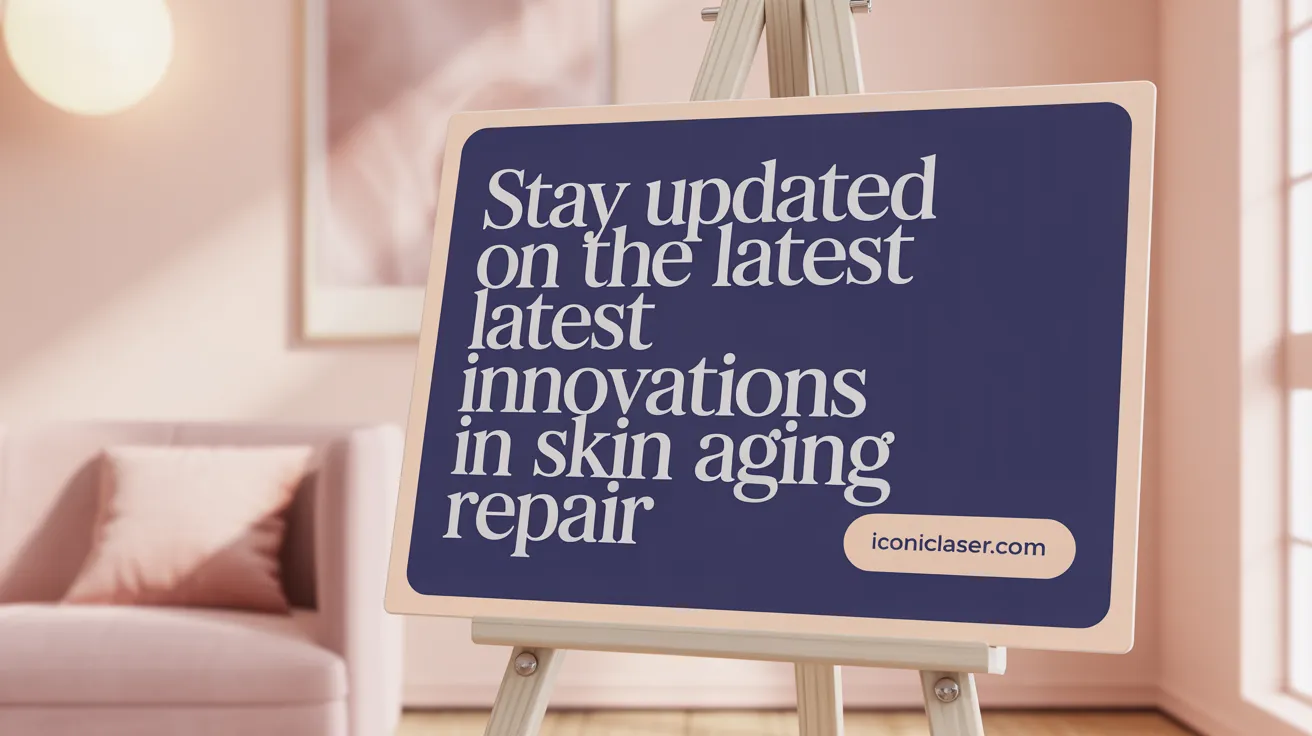 Recent developments in skin rejuvenation emphasize minimally invasive and regenerative treatments that harness cutting-edge science and technology. These approaches include a range of advanced laser, radiofrequency (RF), and ultrasound devices, which stimulate collagen production and skin tightening with less downtime and higher safety profiles.
Recent developments in skin rejuvenation emphasize minimally invasive and regenerative treatments that harness cutting-edge science and technology. These approaches include a range of advanced laser, radiofrequency (RF), and ultrasound devices, which stimulate collagen production and skin tightening with less downtime and higher safety profiles.
A prominent focus within regenerative medicine involves the use of stem cell therapies, particularly adipose-derived stem cells (ADSCs) and stromal vascular fraction (SVF), to enhance tissue repair and restore youthful skin. Platelet-rich plasma (PRP), rich in growth factors, is used widely for its ability to promote angiogenesis and improve skin texture.
Emerging innovations include gene editing technologies such as CRISPR, which hold promise for directly targeting cellular aging pathways like senescence, potentially reversing some signs of skin aging. Additionally, nanotechnology-enhanced delivery systems like nanoemulsions and liposomes substantially improve the bioavailability and absorption of anti-aging agents, boosting their efficacy.
Artificial intelligence (AI) plays an increasingly vital role in personalized treatment planning, outcome prediction, and precise surgical interventions. High-resolution imaging and machine learning algorithms enable dermatologists to customize therapies, monitor progression, and optimize results.
Furthermore, advances in bioengineering—such as 3D bioprinting of skin, bioengineered skin substitutes, and tissue scaffolds—are opening new horizons for restoring damaged or aged skin at a structural level. These innovations aim to improve long-term outcomes and reconstruct complex skin tissues.
Overall, the integration of regenerative techniques with technological innovations continues to propel skin rejuvenation into a new era. These advancements not only enhance skincare outcomes but also set the stage for revolutionary personalized therapies that adapt to each individual’s biological profile. As research progresses, we can expect more effective, durable, and minimally invasive options for reversing skin aging and improving skin health worldwide.
Clinical Validation and Safety Considerations in Skin Rejuvenation
What does the scientific validation through clinical studies reveal about skin rejuvenation treatments?
Numerous clinical studies and randomized controlled trials have established that many skin rejuvenation procedures are both effective and safe when conducted properly. Treatments such as laser skin resurfacing, chemical peels, and microneedling have demonstrated significant improvements in skin texture, elasticity, and a reduction in wrinkles. For instance, laser techniques like fractional CO2 or Erbium YAG lasers promote collagen production, leading to smoother skin, while chemical peels using acids like glycolic or TCA enhance cell turnover and diminish age spots. The broad scientific support for topical agents like retinoids and vitamin C further confirms their role in combating photoaging.
Advanced device-based treatments, including RF, LED, and ultrasound therapies, have shown promising short-term results in tightening and toning the skin. Despite variations in study design, collective evidence indicates that combining these evidence-based options can yield meaningful anti-aging benefits, offering safe, minimally invasive alternatives with controlled results and minimal side effects.
Overall, rigorous clinical validation underscores that skin rejuvenation treatments, when performed under proper protocols, are reliable and markedly effective in addressing signs of skin aging.
What are the safety considerations, benefits, and potential risks associated with evidence-backed skin rejuvenation options?
All evidence-supported skin rejuvenation methods carry inherent benefits and potential risks. Commonly, noninvasive procedures like laser therapies, chemical peels, and RF treatments offer notable benefits such as improved skin firmness, tone, and reduced fine lines with minimal downtime. They are usually well-tolerated, with the safety profile enhanced by careful patient selection and adherence to professional guidelines.
However, risks include transient side effects like redness, swelling, irritation, and bruising, particularly with invasive procedures like deep chemical peels or ablative lasers. Rare adverse events may involve infection, pigmentation changes, or scarring if treatments are not properly managed.
Mitigating these risks involves pre-treatment assessment, selecting appropriate treatment parameters, and following strict post-procedure care, including sun protection and gentle skin care routines. Patients should be monitored for any signs of adverse reactions, and practitioners should provide clear guidelines for recovery.
In conclusion, with proper medical oversight and individualized treatment planning, evidence-based skin rejuvenation techniques are generally safe, offering significant aesthetic improvements alongside manageable side effects when risks are minimized.
Understanding Skin Aging and How Treatments Stimulate Renewal
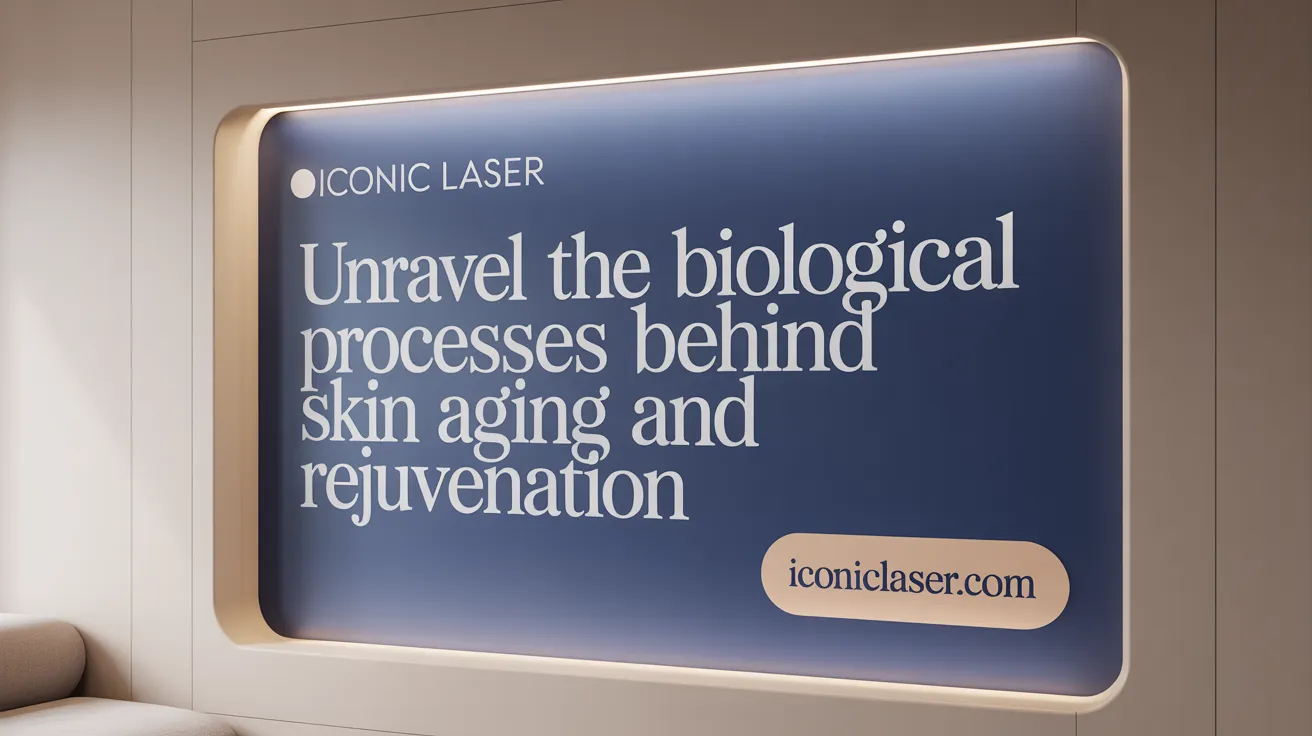 Skin aging results from a combination of intrinsic and extrinsic factors that transform skin at the molecular and cellular levels. Intrinsic aging is driven by genetic and biological processes such as telomere shortening, hormonal shifts, and the accumulation of genetic mutations, which reduce the skin’s ability to regenerate itself. Simultaneously, extrinsic forces like ultraviolet (UV) radiation, pollution, and exposure to toxins accelerate these changes, leading to photoaging.
Skin aging results from a combination of intrinsic and extrinsic factors that transform skin at the molecular and cellular levels. Intrinsic aging is driven by genetic and biological processes such as telomere shortening, hormonal shifts, and the accumulation of genetic mutations, which reduce the skin’s ability to regenerate itself. Simultaneously, extrinsic forces like ultraviolet (UV) radiation, pollution, and exposure to toxins accelerate these changes, leading to photoaging.
At the molecular scale, aging skin shows a decline in essential components like collagen, elastin, and hyaluronic acid. These molecules are crucial for maintaining skin firmness, elasticity, and hydration. Collagen and elastin fibers, responsible for structural support, become fragmented due to increased activity of enzymes called matrix metalloproteinases (MMPs). Advanced glycation end-products (AGEs) form from sugar-protein interactions, stiffening the skin matrix and impairing healing (skin ageing causes).
Cellular senescence plays a central role, with aging cells entering a state of irreversible growth arrest while secreting pro-inflammatory factors known as the Senescence-Associated Secretory Phenotype (SASP). This promotes tissue breakdown and chronic inflammation, further weakening the skin's integrity. Oxidative stress, caused by reactive oxygen species (ROS), damages DNA, proteins, and lipids, further impairing cellular function (oxidative stress).
To counteract these processes, current treatments focus on stimulating collagen and elastin synthesis. Topical agents such as retinoids and antioxidants boost cellular activity and protect against oxidative damage (Science-backed anti-aging ingredients). Invasive procedures like laser resurfacing, microneedling, and platelet-rich plasma (PRP) therapies evoke controlled injury responses that prompt collagen production (Chemical peels for skin rejuvenation, Microneedling for collagen stimulation). Energy-based devices, including radiofrequency and ultrasound, heat deeper skin layers to stimulate ECM regeneration (Non-surgical Anti-Aging Treatments).
Emerging strategies aim to target cellular senescence directly, with approaches like senolytic drugs that selectively eliminate senescent cells, and nanotechnology-enhanced delivery systems that improve the bioavailability of anti-aging molecules (Regenerative stem cell therapies). Gene therapies, including CRISPR-based interventions, are under investigation to modify aging pathways at the DNA level (Gene therapies for aging).
In summary, the scientific understanding of skin aging involves intricate molecular and cellular dynamics. Treatments designed to stimulate renewal leverage this knowledge, utilizing both biological and physical modalities to restore youthful skin structure. The continuous development of regenerative therapies and bioengineering holds promise for more effective and lasting skin rejuvenation solutions.
For further exploration, search queries like "scientific basis of skin aging and rejuvenation" can provide in-depth research and the latest clinical advancements.
Emerging Regenerative and Stem Cell-Based Therapies for Skin Rejuvenation
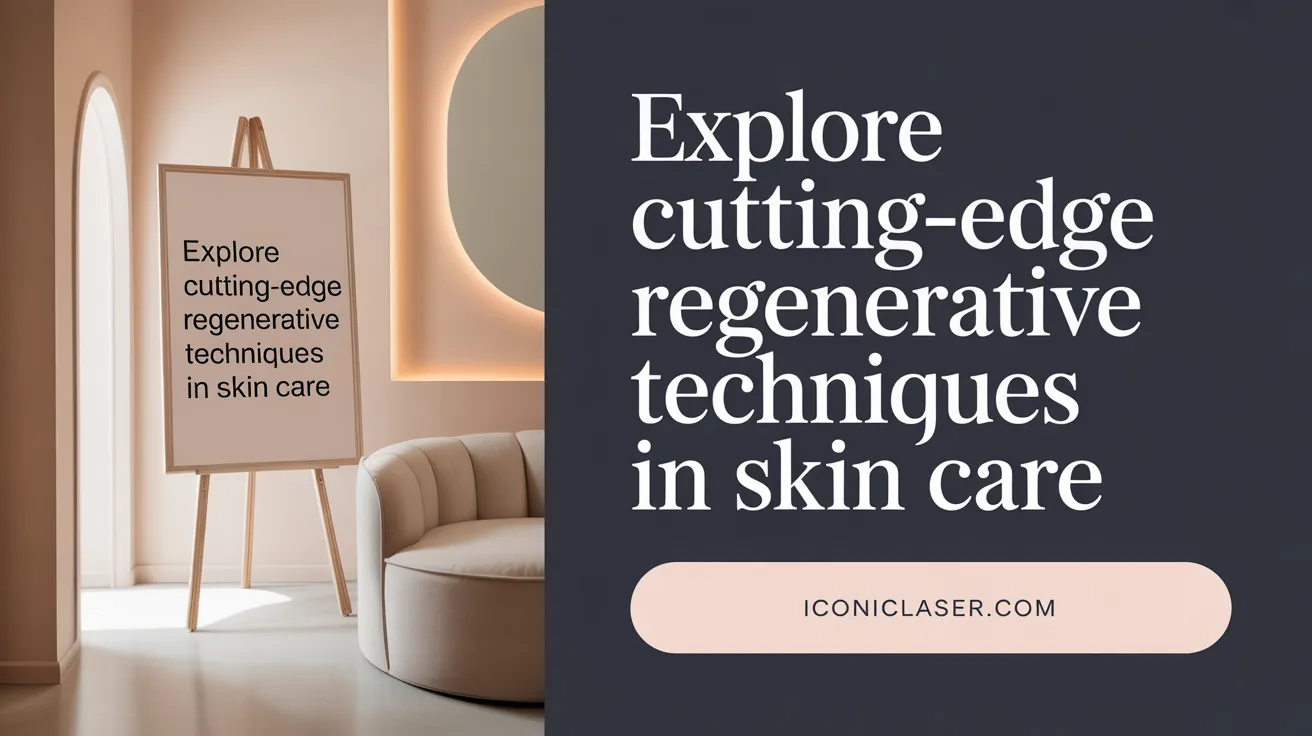 Recent advances in skin rejuvenation are increasingly focusing on regenerative stem cell therapies and stem cell-based methods that aim to improve skin quality, elasticity, and youthfulness.
Recent advances in skin rejuvenation are increasingly focusing on regenerative stem cell therapies and stem cell-based methods that aim to improve skin quality, elasticity, and youthfulness.
One prominent approach involves autologous fat grafting for facial rejuvenation, where a patient’s own fat is harvested and transplanted into facial areas to restore volume and combat signs of aging. Enhancing this process, nanofat—processed fat rich in mesenchymal stem cells—has shown promise in improving skin texture, elasticity, and dermal thickening. These tissues contain adipose-derived stem cells (ADSCs), which secrete growth factors that promote collagen synthesis, angiogenesis, and tissue repair. Enriching fat grafts with ADSCs or stromal vascular fraction (SVF) further increases graft survival and rejuvenation effects.
Another innovative method includes the use of exosomes—tiny vesicles secreted by stem cells—that can deliver bioactive molecules to skin cells. These vesicles stimulate fibroblast activity, promote collagen production, and enhance skin healing without the need for cell transplantation.
Gene therapy is an exciting frontier, with technologies like CRISPR/Cas9 being explored to target genetic pathways involved in skin aging and skin disorders. Such approaches aim to correct age-related genetic changes, potentially reversing or slowing down the aging process.
Nanotechnology plays a vital role in delivering anti-aging compounds, improving the stability, bioavailability, and penetration of ingredients such as retinoids and growth factors. Nanoemulsions and liposomes enable targeted delivery, maximizing efficacy while minimizing side effects.
The future of skin rejuvenation also includes AI-assisted personalized treatments. Machine learning algorithms can analyze individual genetic, environmental, and skin condition data to tailor specific therapies, optimize outcomes, and predict treatment responses.
Overall, these emerging regenerative and stem cell-based techniques represent a new era in aesthetic medicine. They hold the potential for more effective, longer-lasting skin rejuvenation with minimal invasiveness, paving the way for highly personalized anti-aging strategies.
Integrating Science and Innovation for Youthful Skin
Effective skin rejuvenation is a multifaceted field supported by robust scientific evidence that spans traditional invasive procedures, advanced noninvasive technologies, and emerging regenerative medicine approaches. With a deeper understanding of skin aging mechanisms and continuous innovation in therapeutic techniques—including laser therapies, chemical peels, injectables, and stem cell-based modalities—clinicians can tailor treatments for optimized safety and efficacy. Ongoing research and technological advancements, such as gene editing and AI-driven personalization, promise to further enhance outcomes. Ultimately, adopting evidence-based practices, comprehensive patient assessments, and responsible post-care protocols ensures sustained skin health and rejuvenation, offering individuals renewed confidence through scientifically validated methods.
